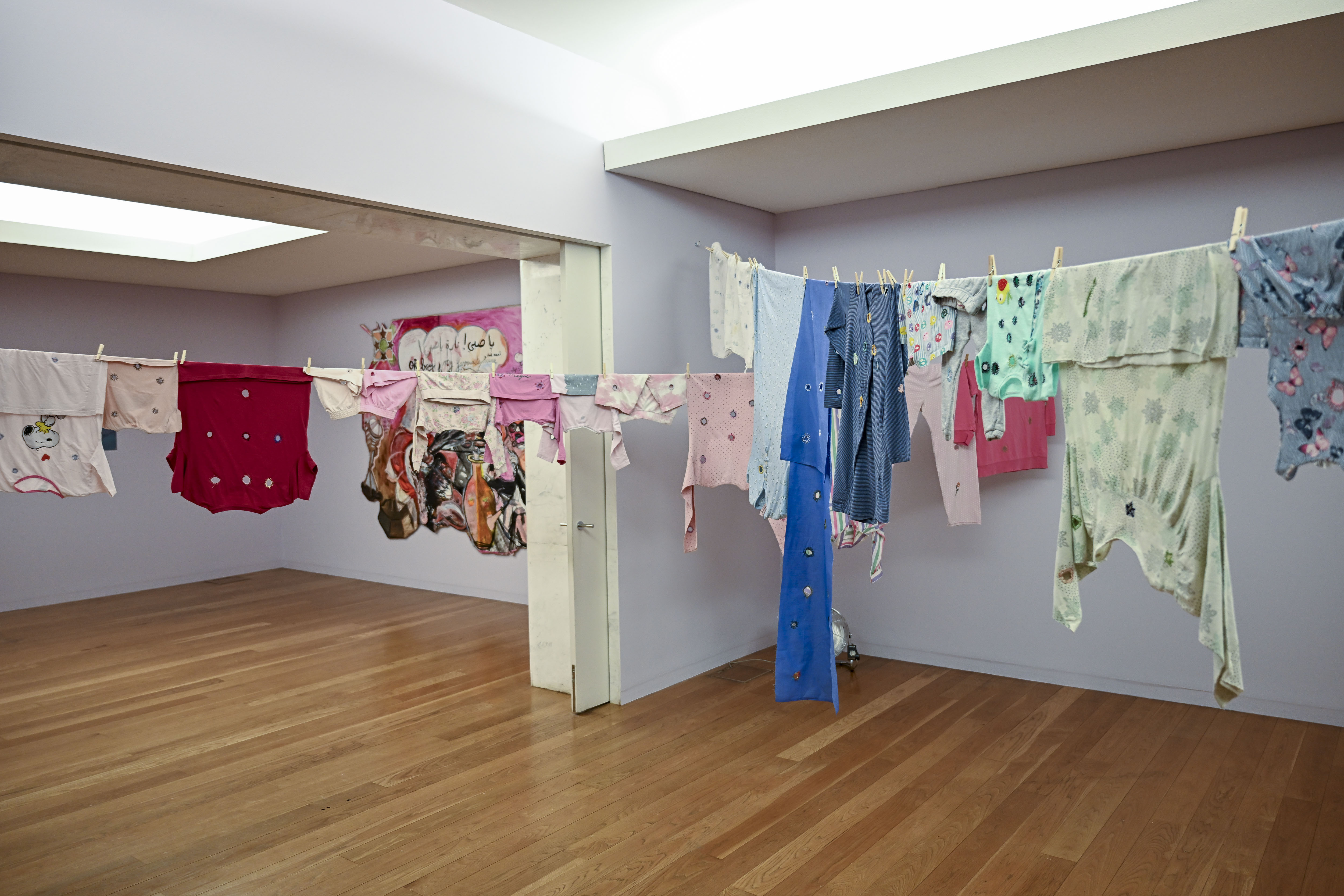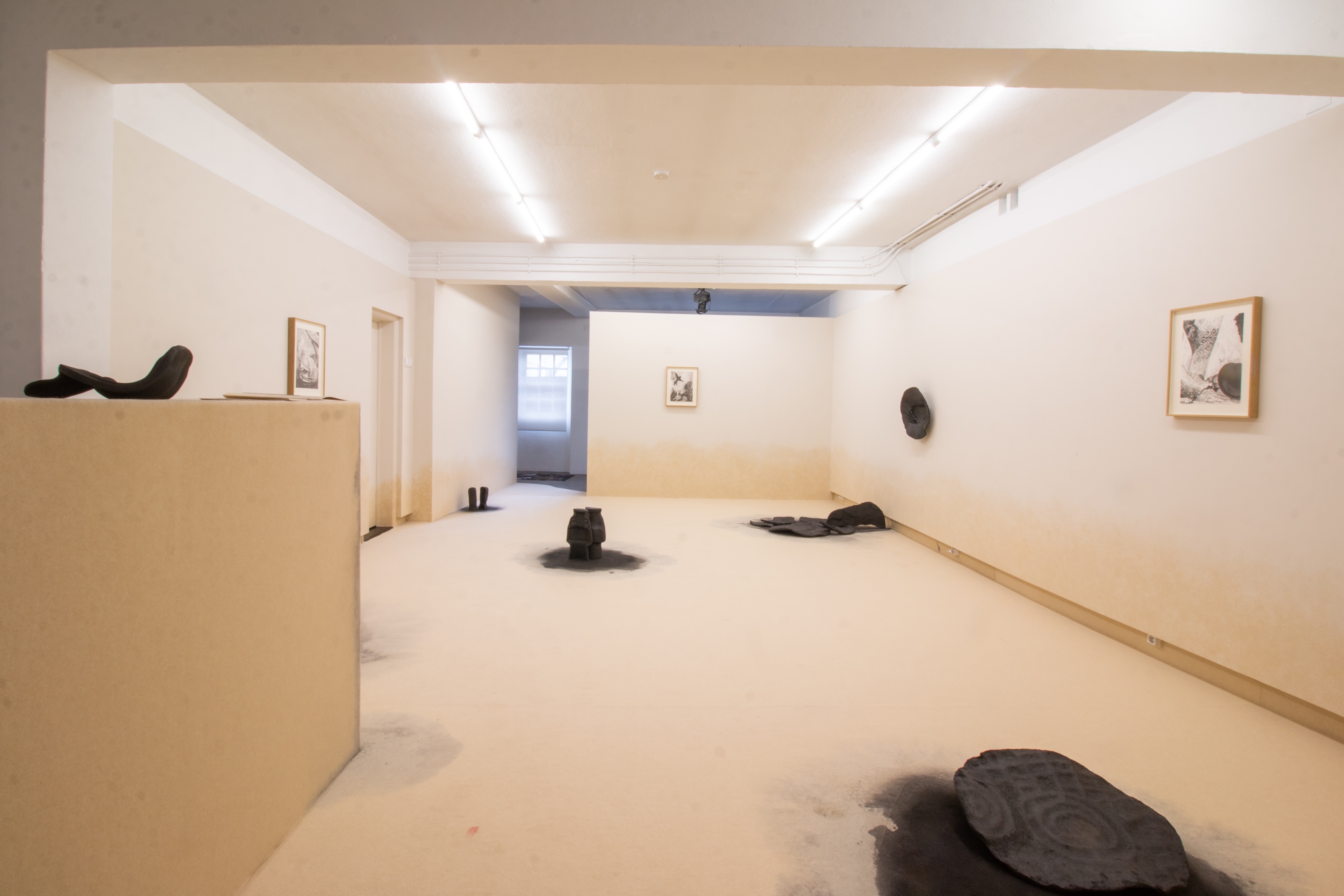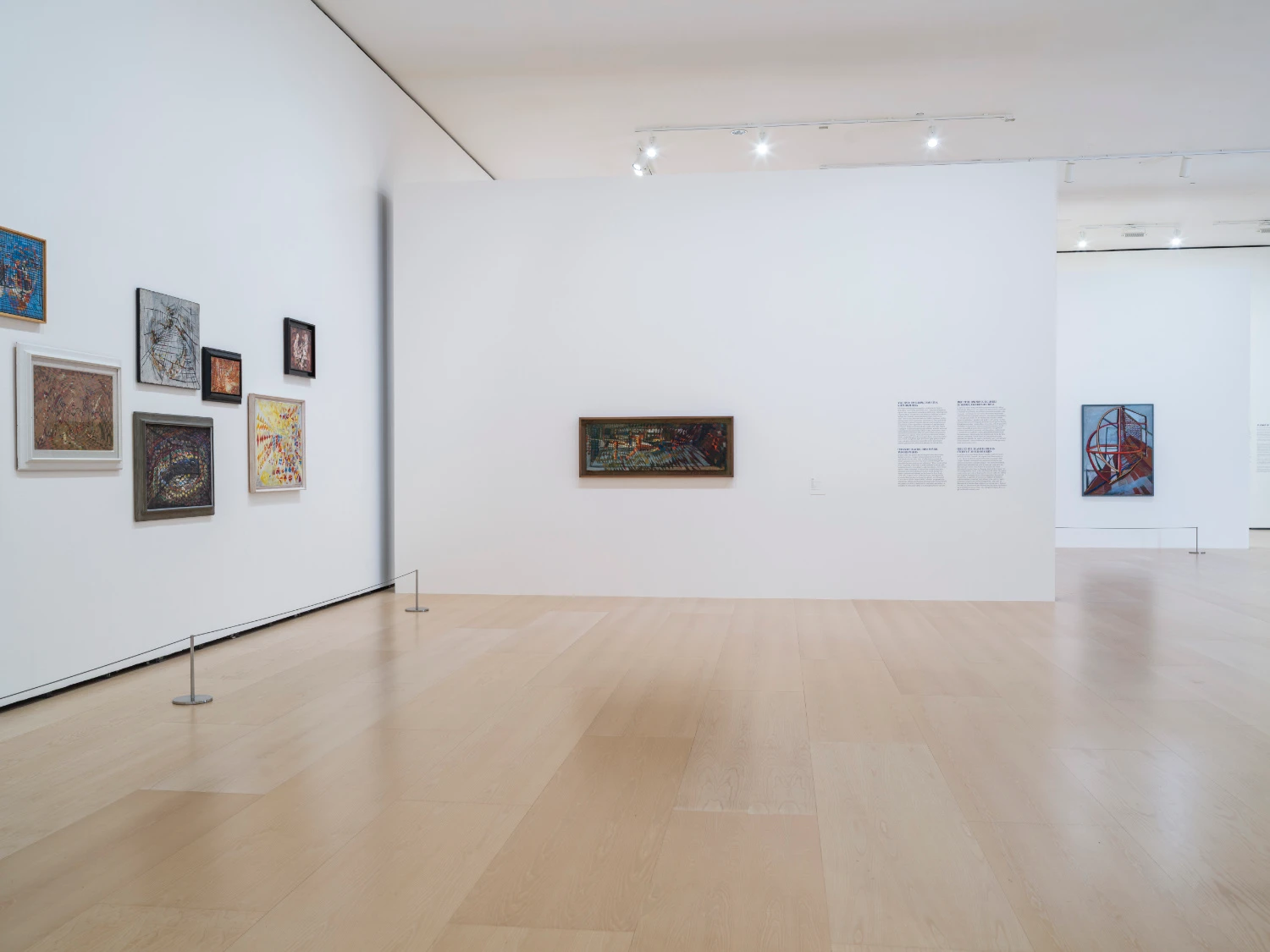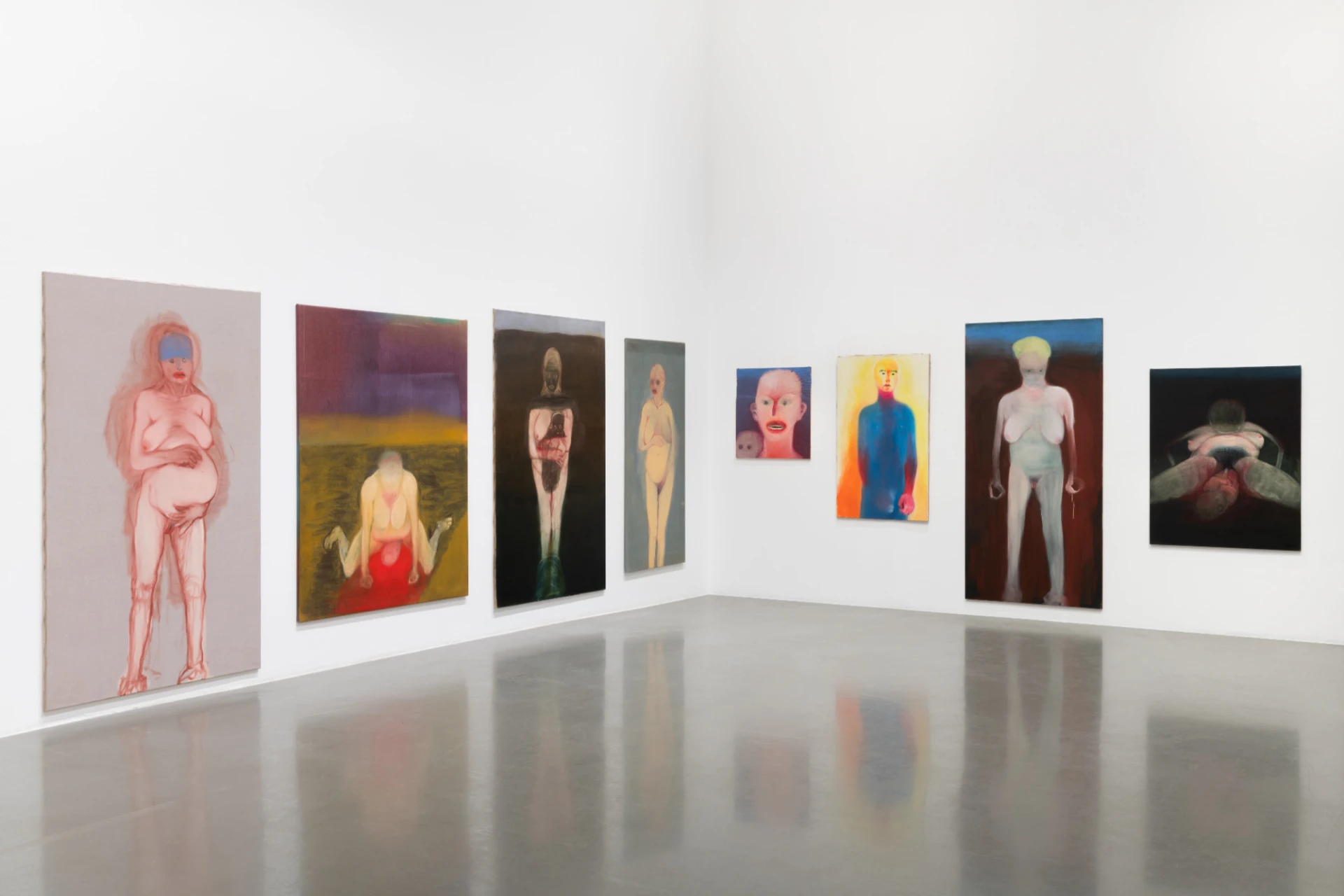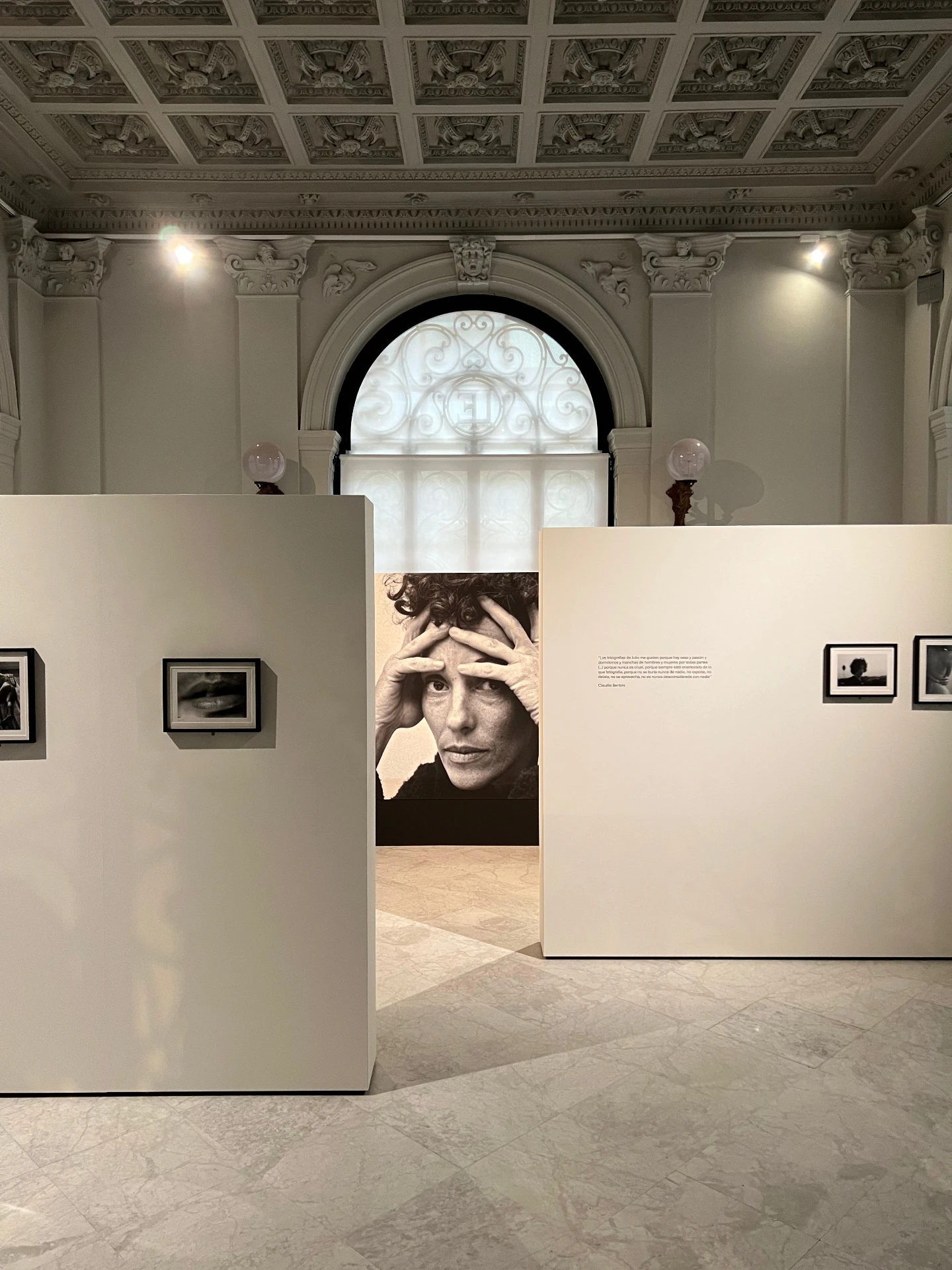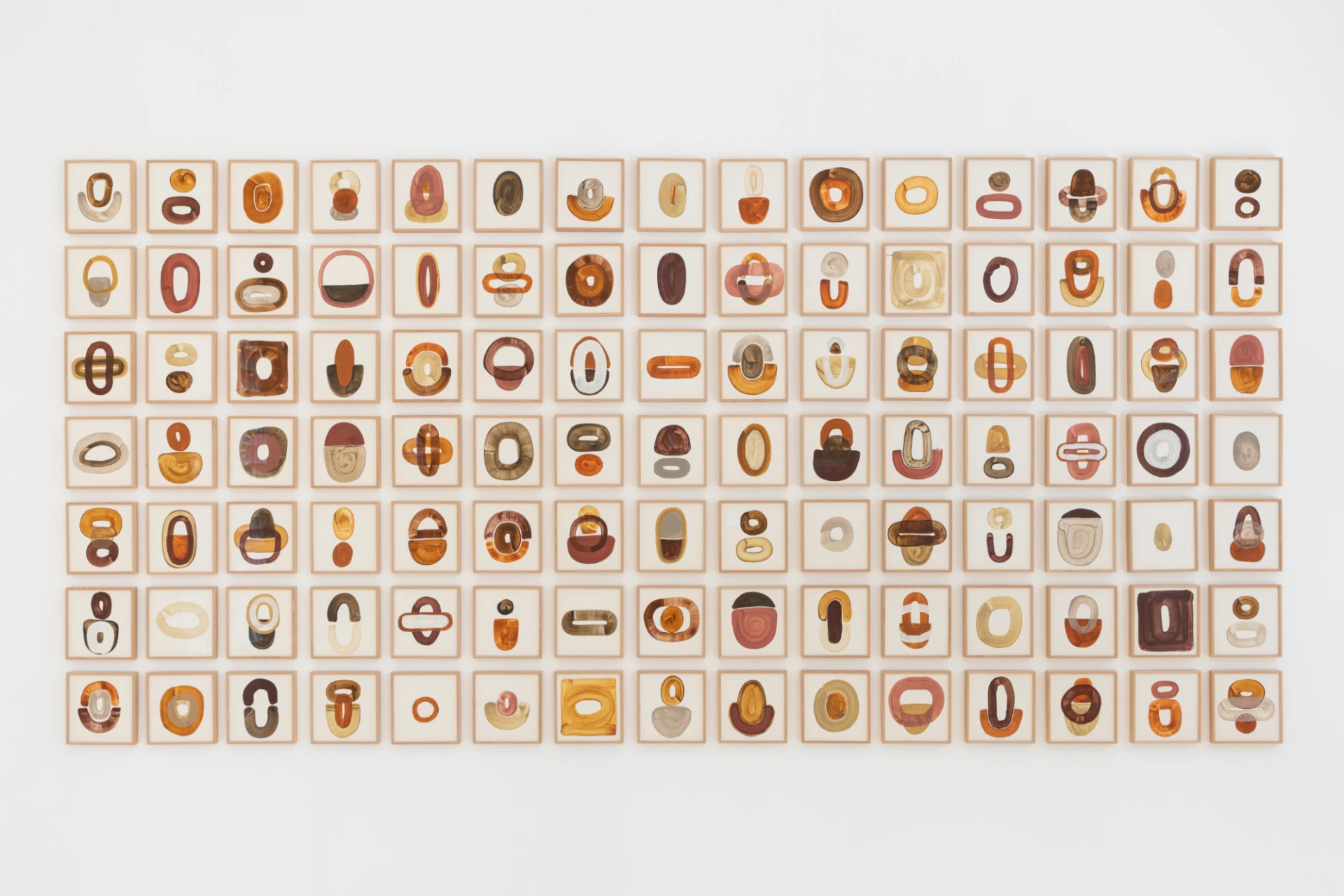Maria Inês Mendes: As we speak, you are in São Paulo, where you have just finished your most recent exhibition Tem canto o olho que vê, together with Leka Mendes. So, I will start by asking you about this exhibition. How did this project and the encounter between your works come about?
Dalila Gonçalves: I met Leka Mendes during my artistic residency at Fidalga studio in 2023. I met several artists during that period who are now my friends. I have maintained a constant dialogue with Leka since then: she helped me with the exhibition I held at the Portuguese Consulate in São Paulo and we always exchanged ideas for projects. Later, when she went to do a residency in Lisbon and Paris, she visited Porto and stayed at my studio and we became closer. Now, when I had the opportunity to exhibit at Massapé, with the support of the Shuttle program of the Porto City Council, I invited her to exhibit with me. It ended up being an exhibition based on the dialogue between two artists, two friends who have the collection in common, the collection of everyday objects, their manipulation and poetic resignification, but also humour. It was a markedly experimental process that we transposed to the exhibition. During the days it was open to the public, we changed the arrangement of the pieces, placing and removing works. We invited Jacopo Crivelli Visconti to follow the project and write a text that captured in words this dynamic of work and friendship. It was a very interesting experience, I believe for both of us. We are even more eager to do other projects together soon.
MM: I saw some photographs of the exhibition that led me to reflect on the affinity between your works. It seems to me that both of you work on rubble, on ruins, using objects that you find and that, in a certain way, are stripped of their functionality. The piece Trinca Ferro by Leka, for example, reminds me of your piece Sinfonia de Vapor, which is part of this Month's cover. In both cases, we see twisted metal structures that seem connected to something invisible, announcing a kind of ghostly presence that punctuates the space. Would you say that this is a possible similarity between your works?
DG: This is a curious relationship. Yes, it is possible. I hadn't thought about it. As I said, we both collect objects that have somehow been discarded or, more in my case, objects in the limbo between usefulness and obsoleteness, between the present, memory and oblivion. In the manipulation of objects in the studio, there is, in a certain way, this ghostly and dreamlike "destiny" that you mention in common. Of course, more or less consciously, what we collect has a lot to do with the places where we circulate, work and grow up. In many of Leka's works, I would say that it is possible to see that she moves around a large city; the materials she collects are often taken from containers in São Paulo, from fabric scraps from wholesale stores. In my case, there is a close relationship between the village, nature, rurality, the folk culture where I was born and raised (the village of Castelo de Paiva), the city where I live and work (Porto) and the travels I take. I think the materials I use reflect this transit in some way.
MM: Along with this project in São Paulo, you also mentioned your participation in an artistic residency organized by Projeto Fidalga. What is your relationship with the city of São Paulo?
DG: Currently, São Paulo is my second home. I would love to live between Porto and São Paulo – which is actually what I have been doing for the past two years. I would love to have a space here, and I still have that hope. My first contact with São Paulo was with a solo project at SPArte, in 2017, and with the residency at Pivô, in 2018. It was during my residency at Pivô that I visited the Fidalga studio for the first time. I was immediately impressed by the project, the team, the close relationship they establish with the artists, how they integrate them into the city and their network of friends. At that time, I was open to doing a residency, and that is what I did in 2023. I would say that this was the best residency I have participated in, thanks to Sandra Cinto, Albano Afonso and the entire team that works at Projeto Fidalga. They have treated me like family and helped me with the bridges that, in the meantime, I have been establishing with other projects also in São Paulo.
MM: The unique relationship you establish with objects and materials, very evident in Sinfonia do Vapor and Fonte Sonora, seems to be transversal to your artistic practice. As you mention in your biography, there is a tendency in your work towards poetic reorganization of collection processes, systematization, and an inventory of everyday objects. In this sense, I ask how you arrive at the objects you use in your works (the old kettles and gourds, for example). What catches your attention?
DG: Actually, I don't know how to explain it well. There is an intuitive relationship, of some fascination, I would say. Many times, objects stay in my studio for years, without me knowing what to do with them. From a distance and looking at most of the objects and materials I collect, I think they have in common the fact that they have signs of use, you feel an absence/presence. Many times they are disused objects, while others have unusual formal characteristics. Basically, these are the peculiarities that I try to highlight, sometimes by showing several similar objects together, sometimes by creating assemblages between different artefacts, emphasizing some kind of poetic relationship. In the case of kettles, my interest stems from the sound of the whistle when the water boils, which has always been a very common sound in my parents' house. At one point, I became fixated on the beauty of the sound of the Alessi kettle with the whistle shaped like a yellow bird (a classic from the Italian brand). The idea of steam having "the power of calling", and of the shape of the animal having the power to transform the sound into a mimesis of its "speech", fascinated and intrigued me. I started by creating a site-specific project for the Fundación Rac, in Pontevedra, with two giant kettles with birds on the tip, which would "talk to each other" in front of a large window with trees behind. At that time, I also started collecting used kettles, continuing my usual process. Then, it was a whole process until I managed to make them play simultaneously, controlling the sound with tubes of different heights and materials. I also collected little plastic toys in the shape of animals that I turned into bronze. I associated the sound of each kettle with a specific animal, trying to recreate the environment of a forest. The Sinfonia de Vapor brings together 28 kettles, from different origins, with different amounts of water sitting on small stoves, connected to smart sockets, previously programmed taking into account the boiling and cooling times, etc. It is a work that continues to be refined, but which, in truth, is a struggle to try to control the uncontrollable. The gourds also came about by chance. During the pandemic, I saw some unconventional gourds drying in my village. They looked like entrails, mistakes of nature, very different from the traditional pear-shaped gourds I was familiar with. At that time, I started looking for similar gourds among farmers in Portugal and Brazil and bought hundreds... without really knowing why, I confess. Over time, I began to notice their acoustic, thermal, formal, and impermeable potential. I began to do collage exercises that accentuated this shapeless and visceral character, but also experiments in manipulation to highlight the characteristics of their coverings and their sound potential. I ended up designing small mechanisms that replace human handling - the coupled gourds became sculptures, autonomous installations capable of demonstrating by themselves the sound of their seeds, of the water they preserve, the resonance of their hollow volumes "that make the air ring". I presented them in Coimbra and made new pieces in São Paulo, where they were also exhibited in 2024.
MM: Where does this interest in sound come from? Do you intend, in some way, to (re)construct a dreamlike universe through the soundscapes you compose?
DG: I am interested in sound as an intrinsic characteristic of a given object. For example, the sound of kettles is closely linked to the object itself. In gourds, and although there is not such a direct relationship, there is an association between the gourd and the manufacture of different instruments and this is obviously due to their acoustic potential. When I say that I am interested in showing what defines and distinguishes an object, sound is often one of these differentiating characteristics, and it is in this sense that I am interested in working with it. In the performance/installation Colunas de Ar, which I presented at Galeria Quadrum and the Portuguese Consulate in São Paulo, the sound is part of the object that gives the performance its theme. There are hundreds of ocarinas from the 5 continents that imitate animal sounds. This soundscape also results from a sound inherent to the material itself. What I do is try to control the sounds that the objects give me and arrange them in a way that accentuates the absurd. I think that in these works there is a memory activation button, a game between the real, which we recognize from the object, and the unusual that derives from its arrangement and presentation.
MM: The word dissection often appears in the discourse surrounding your work, which refers to a separation and detailed analysis of the parts of a whole so that we can understand its structure and functioning. In this case, dissection emerges, above all, as a process of discovering objects, materials, their plasticity, history, function and sonority. First, let me ask: Where did your fascination for this research process come from, which, although common in many areas of knowledge, seems distant from the artistic universe? Second, I would also like to understand what your objective is with this work methodology. Are you interested in the process - as such - or, on the contrary, do you seek to find, through dissection, a veiled truth in objects?
DG: I don't know exactly where this fascination came from. In fact, I believe it comes from the curiosity to know how things are made, how materials react to a certain colour or material, the passage of time, the relationship with other materials... I speak mainly from a procedural point of view. I have always had this curiosity, not only in the studio but in my daily life. Now, when I speak of dissecting, I obviously speak in a metaphorical sense, I refer to observation, to the knowledge of the object and the specificities that make it unique. My pieces tend to be the gesture of presenting these singularities - like digging a tunnel in the mountain to show the other side of things. Poetry is often made in this straight, and sometimes literal, line of perception of the object. Other times, the opposite happens. When the object already has this linear reading, I build paths around the mountain to show that this immediate perception can hide paths, stories, relationships, and processes that are more interesting than its end. In this sense, I think that dissection is a process quite common to many artists, at least the illusion that we can find "veiled truths" in a procedural path with a free and curious look at what surrounds us.
MM: And what other projects are coming up?
DG: At the end of 2025, I plan to return to São Paulo for a project at the Fonte space. In the summer, I will present a project at the Ocupa Gallery in Porto, and in 2026, I have an exhibition scheduled for Kindred Projects in Lisbon and a presentation at Poush in Paris. I also have some group exhibitions coming up that are not yet fully booked.
